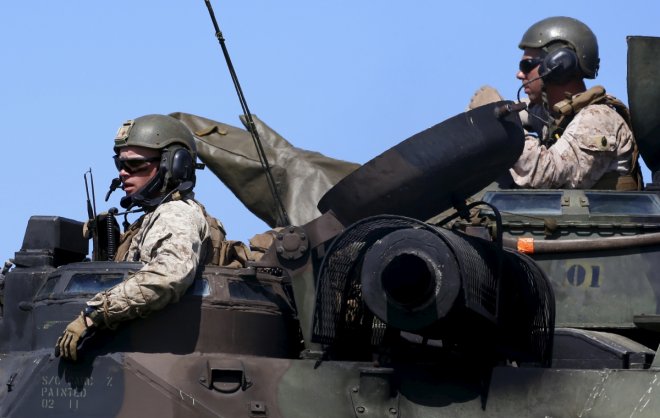
As the Philippine is expected to end the battle with the Daesh-inspired extremist group this October 2017, it cannot be denied that the US forces played a significant role in containing the ISIS-inspired extremists by training the Philippine Marines to corner the remaining hundreds.
Despite Philippine President Rodrigo Duterte challenging US forces to go back to their home country last year, more than a hundred of US special forces remained in the Philippines for the joint military and naval exercises with the Philippine counterparts.
Thus, the joint US-Philippine military exercise seems to bear fruit. Since the war broke out in Marawi on May 23, the US forces were among the first foreign military who flew to the battle zone to provide military technical assistance and intelligence advice to control the ISIS-inspired group in Marawi.
Though US Forces were not allowed to battle face to face against ISIS-inspired militants in Marawi, they have been providing intelligence information and on-site training to the Philippine Marines on how to spot the enemy using sophisticated technology.
Capitalising on their drone planes, the US forces were able to capture information to determine the strongholds and positions of the enemy in order to counter the enemy's sniping teams. Apart from the US, Australia also lent its Orion Surveillance aircraft to monitor the movements of the militants.
According to military sources, most of the Philippine battle-tested soldiers were killed by snipers and explosions from Improvised Explosive Devices (IED) in abandoned houses left by the militants.
The US military also provided the Philippine Marine soldiers who normally operate at night with night vision goggles to hunt snipers from the position of the militants.
The US government also provided two Cessna C 208 aircraft to support military operations against ISIS militants and an amount of $14.3 million for the rehabilitation of battle-torn Marawi City.
As the battle in Marawi is entering its fifth month, 670 militants and 149 soldiers have already been killed while 1,182 hostages have been rescued.
While Duterte was hoping, his new allies China and Russia will play a significant role in suppressing the ISIS militants in Marawi City, unfortunately, their stronghold was restricted to simply providing rifles and financial assistance. Unlike the US, the deployment of US military in the Philippines was justified by two agreements, the Mutual Defense Treaty (MDT) signed in Washington in 1951 and the Enhanced Defense Cooperation Agreement (EDCA) signed in 2014.
Unlike the US, the deployment of US military in the Philippines was justified by two agreements, the Mutual Defense Treaty (MDT) signed in Washington in 1951 and the Enhanced Defense Cooperation Agreement (EDCA) signed in 2014.
These two agreements allowed the rotational presence of US military troops in the Philippines despite Duterte's hostile remarks on the US. While China and the Philippines have expressed interest to hold joint military exercise, the plan cannot be operationalised without an executive agreement allowing joint military exercises.









